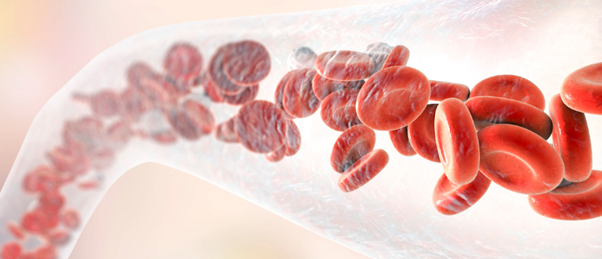Red blood cells discovered to be a vital component of the immune response

Researchers have exposed the overlooked role of red blood cells (RBC) in the immune system and discovered a new drug target for the treatment of acute anemia, a symptom of inflammatory diseases like COVID-19.
A recent study, led by Nilam Mangalmurti at the Perelman School of Medicine at the University of Pennsylvania (PA, USA), investigating the importance of RBCs in immunity has identified their role as immune sensors. This newly exposed function explains how severe infections can lead to acute inflammatory anemia in severe infections. The results of this study could lead to better treatment of acute anemia through a new drug target.
Acute inflammatory anemia is often observed as a symptom of severe infections, a reaction that has baffled researchers for a long time, but indicates that there must be some connection to RBCs in these instances. While the vital role of RBCs in the delivery of oxygen to tissues within the body is well understood, their role within the immune system has often been overlooked and considered trivial.
However, a recent discovery revealed that RBCs express toll-like receptor 9 (TLR9) and bind cell-free mitochondrial DNA. TLR9 is a type of toll-like receptor (TLR), a class of proteins that play a vital part in the innate immune system, they work to activate immune responses by recognizing invading pathogens and initiating the production of cytokines.
With the expression of these immune-linked proteins identified, and questions surrounding the acute anemia symptomatic of infections abundant, Mangalmurti examined RBCs to re-evaluate the role that they play in the immune response.
To analyze the link between TLRs and RBCs, Mangalmurti took blood samples from 50 sepsis patients and 100 covid-19 patients, analyzing their red blood cells to explore TLR9 on RBCs. An increased expression of the TLR9 protein was seen on the RBCs of the patients with sepsis and COVID-19 who also experienced acute anemia.
 Nanotags enable the detection of pancreatic cancer in the blood
Nanotags enable the detection of pancreatic cancer in the blood
Pancreatic cancer is one of the deadliest forms of cancer, with the 5-year survival rate in men and women at around 3%. The symptoms are subtle – if they are even present – and therefore, the diagnosis of pancreatic cancer is extremely difficult.
Commenting on this observation, Mangalmurti highlighted that, “[t]hese findings explain one of the mechanisms for the development of acute inflammatory anemia for the first time.” The TLR9 receptors bind cell-free DNA rich in unmethylated CpG sites – a hallmark of pathogenic DNA. As RBCs begin to lose their structure when they bind multiple CpG-containing DNA this leads to an increased rate of RBC removal and further activation of the innate immune system, causing inflammation in places that were previously unaffected.
The research has shown that RBCs have a vital function in the immune response, their binding of DNA to the TLR9 works as a sensor to remove these RBCs from circulation when the body is fighting certain diseases. This illustrates that gas exchange is not the only job of RBCs and that they act as a vital player in inflammation.
The results of this study pave the way for further research into whether this receptor could be a new drug target for treating patients with inflammatory diseases. There is also the diagnostic aspect to this discovery as physicians could potentially sequence the nucleic acids found on the RBCs of their patients to diagnose them more accurately.
Mangalmurti concludes, “now that we know more about the mechanism of anemia, it allows us to look at new therapies for treating acute inflammatory anemia without transfusions, such as blocking TLR9 on the red blood cells. Targeting this TLR9 may also be a way to dampen some of the innate immune activation without blocking this receptor in immune cells, which are very important for the host when fighting a pathogen or injury.”